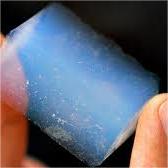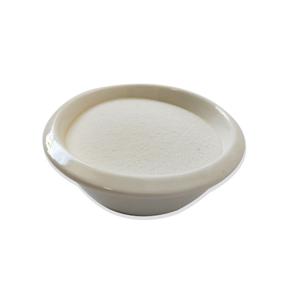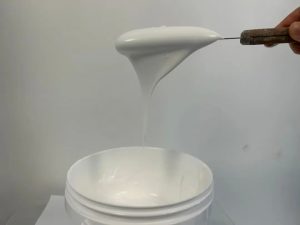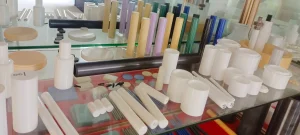Professional industry ceramic supplier, silicon nitride, silicon carbide, aluminum nitride and any other kinds of ceramics.
1. Introduction
Silicon carbide crucibles are essential tools in foundries, laboratories, and metal casting operations thanks to their exceptional thermal conductivity, resistance to thermal shock, and ability to withstand temperatures above 1600°C. However, even the toughest silicon carbide crucible can fail prematurely if not handled correctly. This guide will show you exactly how to use and care for your crucible—whether you’re melting aluminum, copper, or precious metals—so you get the most out of your investment.

2. Understanding Your Silicon Carbide Crucible
A silicon carbide crucible is made from high-purity silicon carbide (SiC), often reinforced with additives to enhance strength and thermal stability. Unlike alumina (Al2O3) or zirconia crucibles, silicon carbide offers superior heat transfer and durability in repeated heating cycles. You’ll also encounter related products like silicon carbide ceramic tiles, silicon carbide tubes, and even silicon carbide ceramic baking dishes—but for metal melting, the crucible remains the workhorse.
It’s worth noting that while boron carbide vs silicon carbide debates exist, boron carbide is harder but more brittle and expensive, making silicon carbide the go-to for most industrial melting tasks.
3. Step-by-Step: How to Use a Silicon Carbide Crucible Safely
3.1. Inspect Before Use
Always check your crucible for cracks, chips, or signs of wear before each use. Even hairline fractures can lead to catastrophic failure during heating.
- Never use a damaged crucible.
- Ensure the crucible fits securely in your furnace or kiln without wobbling.
3.2. Preheat Gradually
Thermal shock is the #1 cause of silicon carbide crucible failure. Always preheat slowly:

- Start at 150–200°C for 15–30 minutes.
- Increase to 600–800°C over another 30–60 minutes.
- Only then ramp up to your target melting temperature.
This gradual ramp-up allows moisture and residual gases to escape safely.
3.3. Load Properly
Overfilling stresses the crucible walls. Fill only to 70–80% capacity to allow room for metal expansion and stirring.
- Use clean, dry charge materials to avoid steam explosions.
- Avoid dropping metal ingots into the crucible—slide them in gently.
3.4. Avoid Sudden Cooling
Never quench a hot crucible in water or expose it to cold drafts. Let it cool naturally inside the furnace or on a ceramic fiber pad.
4. Common Problems and Solutions
4.1. Cracking or Spalling

Causes: Rapid heating/cooling, mechanical impact, or using a wet crucible.
Solution: Always follow preheating protocols and handle with ceramic tongs—not metal tools that can chip the surface.
4.2. Metal Contamination
Silicon carbide is generally inert, but prolonged exposure to certain alloys (like high-iron or reactive metals) can cause erosion.
Solution: Use dedicated crucibles for specific metals. For ultra-high-purity applications, consider a silicon nitride crucible from a silicon nitride crucible factory—silicon nitride offers even better chemical resistance in some cases.
4.3. Glaze Buildup or Slag Adhesion
Repeated use can leave slag deposits that reduce heat transfer.
Solution: After cooling, gently chip away residue with a wooden or plastic scraper. Avoid metal tools. For stubborn buildup, a brief soak in a mild acid solution (follow safety guidelines) may help.
5. Maintenance and Storage Tips
Store your silicon carbide crucible in a dry, dust-free environment. Moisture absorption can lead to steam pressure buildup during reheating.
- Never stack crucibles directly on top of each other—use spacers.
- Keep spare crucibles off concrete floors, which can wick moisture.
Also, while you might see products like silicon carbide ceramic dinner plates or silicon carbide baking ceramic dishes in kitchens, industrial crucibles require far more rigorous care.
6. When to Replace Your Crucible
Even with perfect care, all crucibles wear out. Replace yours if you notice:
- Deep cracks or holes
- Significant thinning of walls
- Warping or deformation
- Reduced melting efficiency (longer heat-up times)
Don’t push a worn crucible—it’s a safety hazard.
7. Bonus: Silicon Carbide vs. Alternatives
While silicon carbide is excellent for most non-ferrous metals, consider alternatives for specialized needs:
- For extreme chemical resistance: silicon nitride ceramic (e.g., silicon nitride ring, custom silicon nitride heat shield)
- For ultra-high purity: high purity silicon nitride powder market materials
- For armor or abrasion resistance: boron carbide ceramic plates
Note: Silicon carbide ceramic columns, RBSiC silicon carbide tile blocks, and silicon carbide burner nozzles all leverage the same core material properties but in different forms.
8. Conclusion
A silicon carbide crucible is a powerful, durable tool—but only if treated with respect. By preheating properly, avoiding thermal shock, loading correctly, and storing it dry, you’ll extend its life and ensure safe, efficient melting every time. Whether you’re in a small workshop or large foundry, these simple steps make a big difference in performance and safety.
Our Website founded on October 17, 2012, is a high-tech enterprise committed to the research and development, production, processing, sales and technical services of ceramic relative materials such as How. Our products includes but not limited to Boron Carbide Ceramic Products, Boron Nitride Ceramic Products, Silicon Carbide Ceramic Products, Silicon Nitride Ceramic Products, Zirconium Dioxide Ceramic Products, etc. If you are interested, please feel free to contact us.




